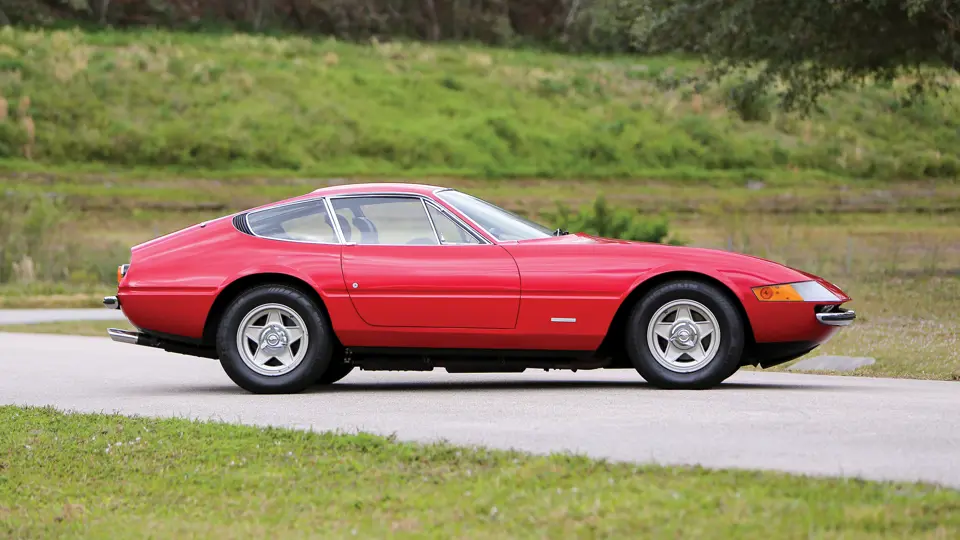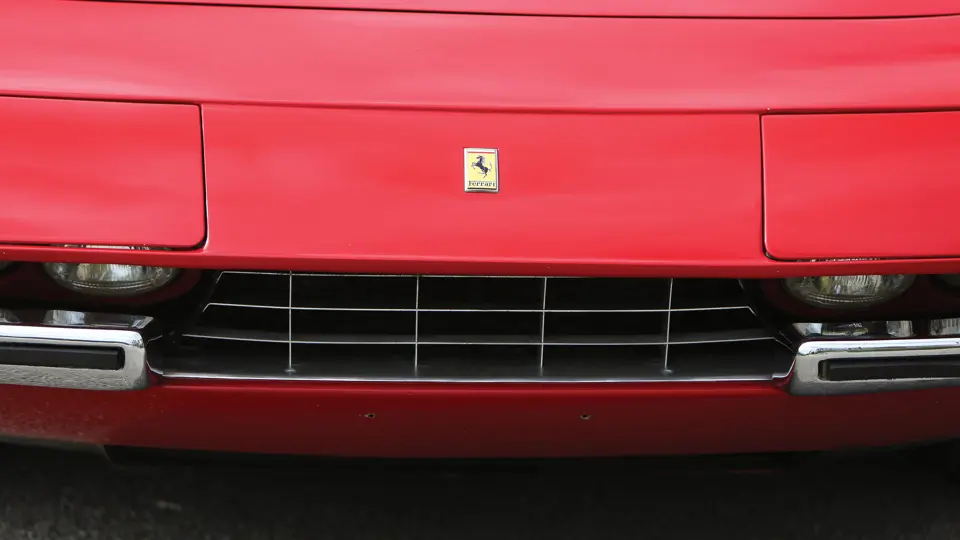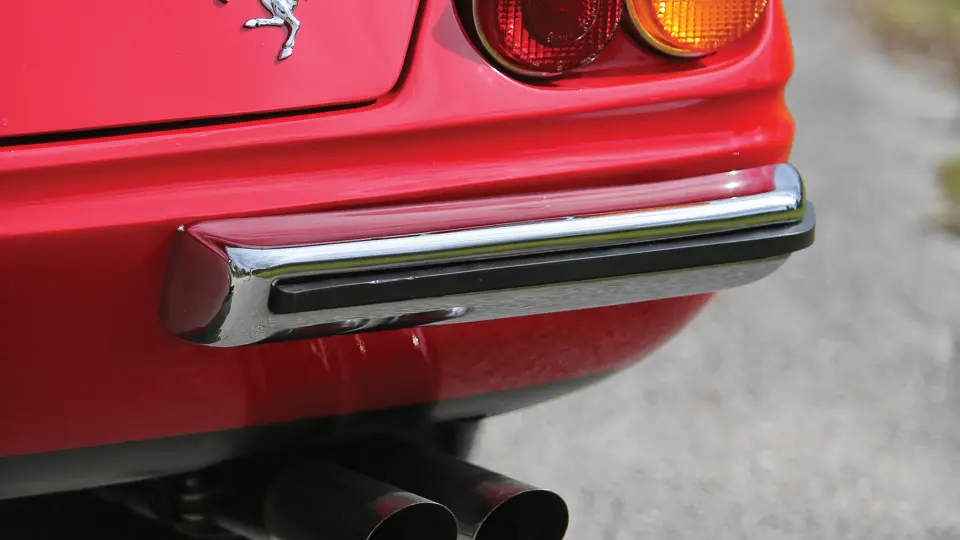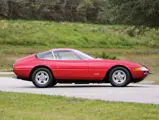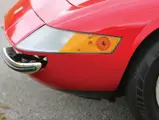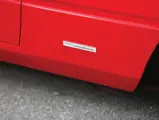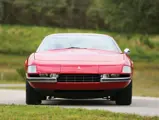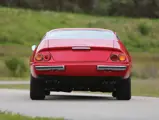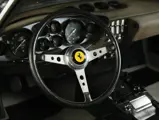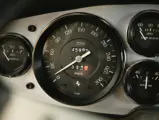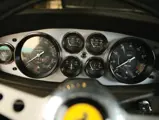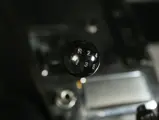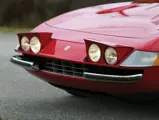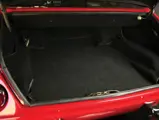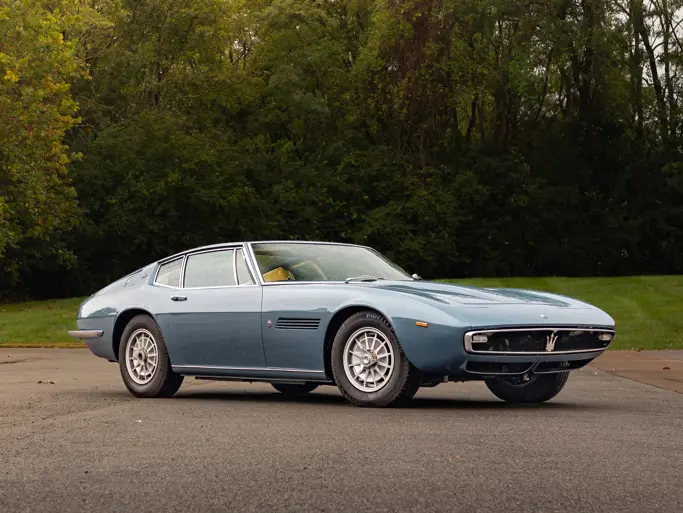
1972 Ferrari 365 GTB/4 Daytona Berlinetta by Scaglietti
{{lr.item.text}}
$621,000 USD | Sold
{{bidding.lot.reserveStatusFormatted}}
- European-specification example
- Currently equipped with air conditioning
- Smog-exempt DOT documentation included
- Includes spare set of Borrani wire wheels
- Original matching-numbers engine and gearbox
The 365 GTB/4 that debuted at the Paris Motor Show in the fall of 1968 marked a great departure from the 275 GTB that preceded it. Its hidden headlights, truncated tail without a spoiler, and five-spoke alloy wheels brought the brand into the modern era to compete against Lamborghini's dramatic Miura.
The Daytona was not merely a response to the Miura, however. It was the work of Pininfarina's Leonardo Fioravanti, whom Petrolicious calls "the designer behind much of the magic" at Ferrari through the 1980s. With its long hood and hidden headlights covered initially by Perspex and later reworked as retractable units to satisfy U.S. federal requirements, the GTB/4 became the quintessential Italian long-distance grand-touring car design. Underneath, it utilized a welded tubular steel frame, an independent suspension, and a new version of the Lampredi V-12 complete with four chain-driven camshafts and six downdraft Weber carburetors. At 352 hp, the 365 GTB/4 boasted two more horses than the Miura, a point hardly lost on engineers in Sant'Agata.
The motoring press dubbed the supercar Daytona, a nickname that stuck with engineers and designers but not marketers in Maranello; Ferrari rarely refers to the car as anything other than the 365 GTB/4. The Scaglietti-bodied 365 GTB/4 Daytona went into production in 1969 and spawned a convertible Spider the next year at the Frankfurt salon.
Journalist Ken Bachelor said at the time that its "excellent horsepower and torque give the Daytona performance to match its looks." Contemporary Road & Track testing found a 0-60 mph sprint of just 5.5 seconds and a top speed of 174 mph. The Daytona excelled at long-distance, high-speed traveling thanks to its plush interior, but this archetypal supercar was just as at home on a race track. Lightweight versions finished 5th and 9th overall at Le Mans in 1972.
The Daytona Berlinetta offered here, the 721st example built, was delivered new to a Willy Valentini of Conseza, Italy, in 1972. Originally finished in Blu Dino (106-A-72) over Nero (VM 8500) leather trim, it is now presented in Rosso Chiaro (20-R-190) over Nero. The GTB/4 benefits from the later pop-up headlights but was otherwise a standard European-market Daytona. It is easy to imagine Signor Valentini hustling the Daytona through the hills of southern Italy near his home in picturesque Conseza. Several years later, in 1976, the Daytona found itself in the U.S., where it was acquired by a noted cardiologist in Youngstown, Ohio. Dr. Elias Saadi enjoyed the car for over two decades and eventually had it properly stripped and repainted in correct red lacquer. After the doctor sold the car in 1999, it passed between several owners in Texas and California, including James Hussey of San Leando in 2001, who apparently bought the car as a 50th birthday present to himself. The Daytona was acquired by the current owner in 2004.
In 2012, he intended on selling the Ferrari and commissioned Rod Drew of Francorchamps to perform an extensive engine and transmission rebuild totaling nearly $40,000. The car was pulled off the market, however, and then had the rear suspension rebuilt and an Ansa muffler installed. It has been driven barely 500 km since and today displays 45,885 km.
The Daytona shows limited signs of use inside and out. Its red paint shines and its chrome trim appears as-new. Inside, its new carpet delivers an excellent first impression. Its black leather seats have the creasing expected with use but appear soft and original. Its radio and period-correct, functioning air conditioning serve as reminders of its original intended use as a car designed for long-distance continental excursions. The Daytona's hood opens to reveal its V-12, which has been detailed. Included in the sale is a set of new, never installed Borrani wire wheels and tires.
Overall, this Daytona is ready to be enjoyed as the high-speed, grand-touring Ferrari it was intended to be.


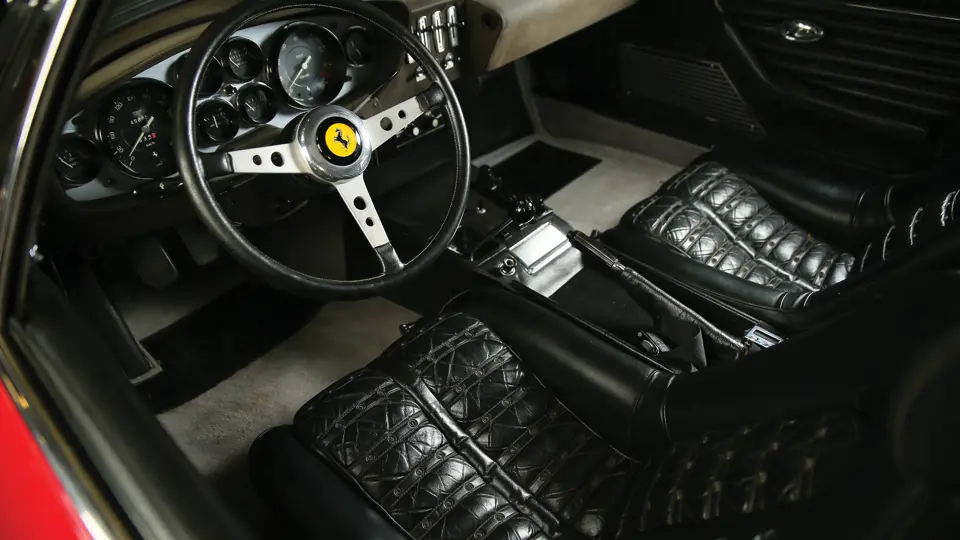

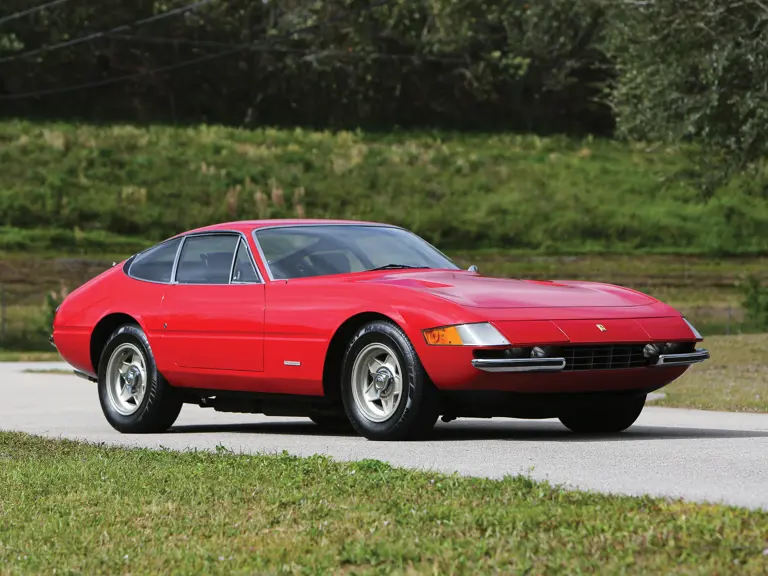
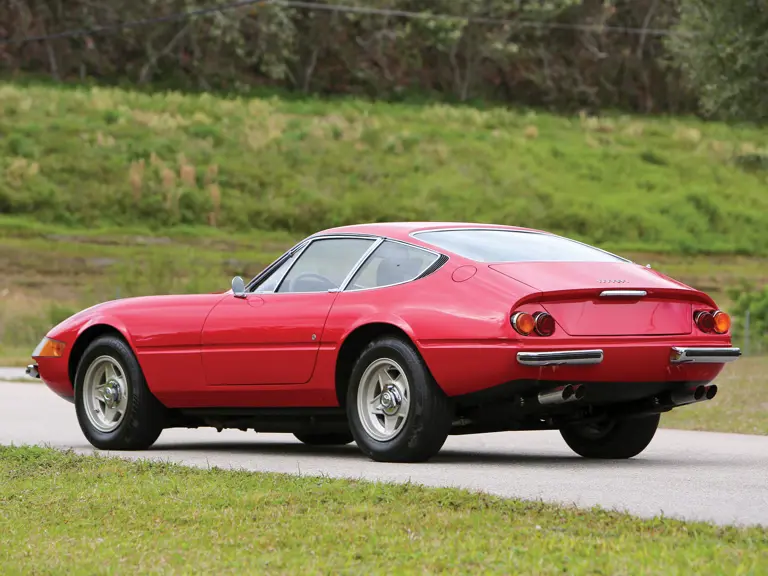



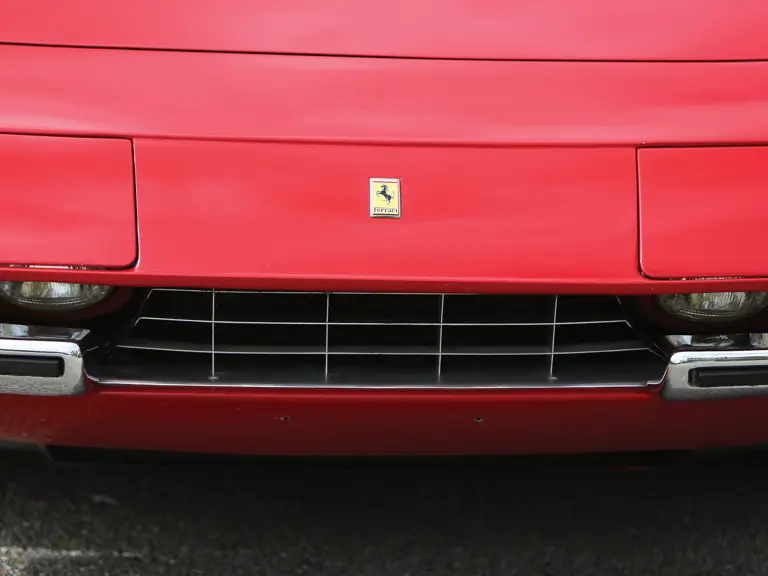
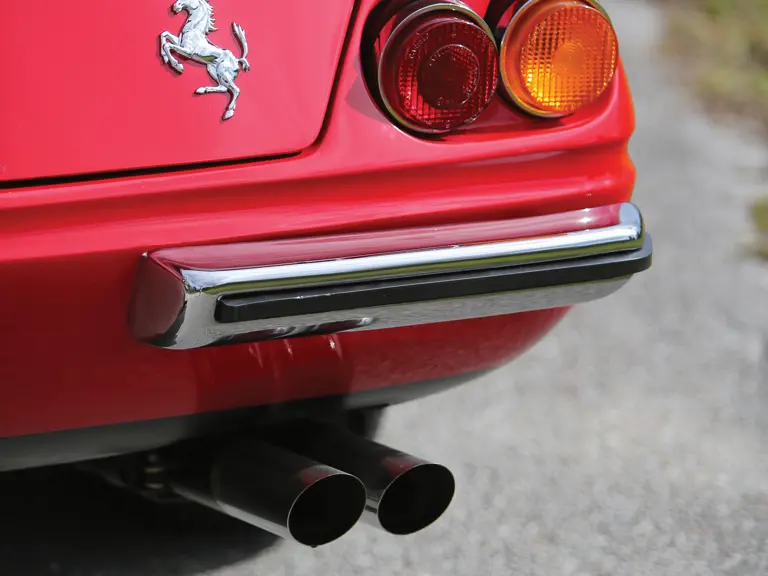
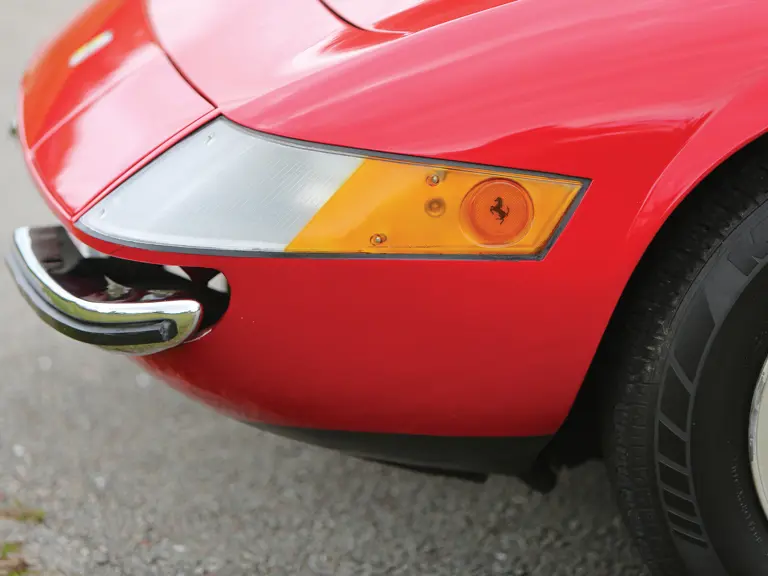
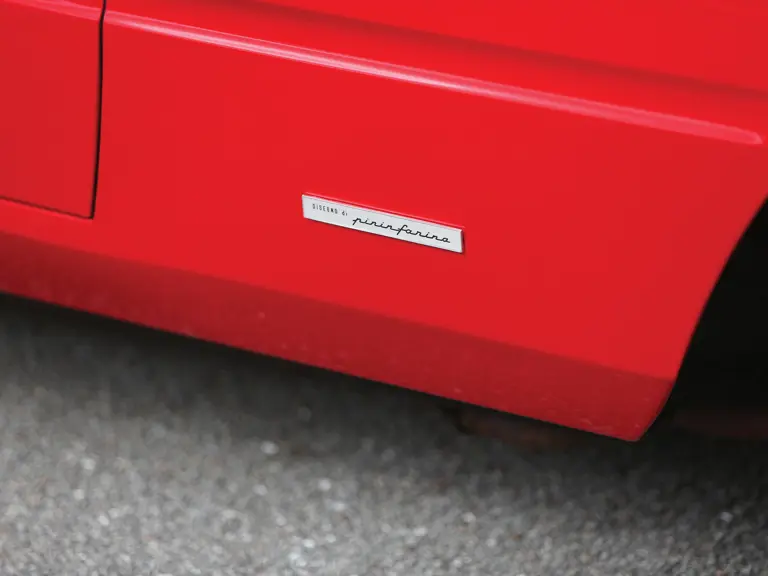
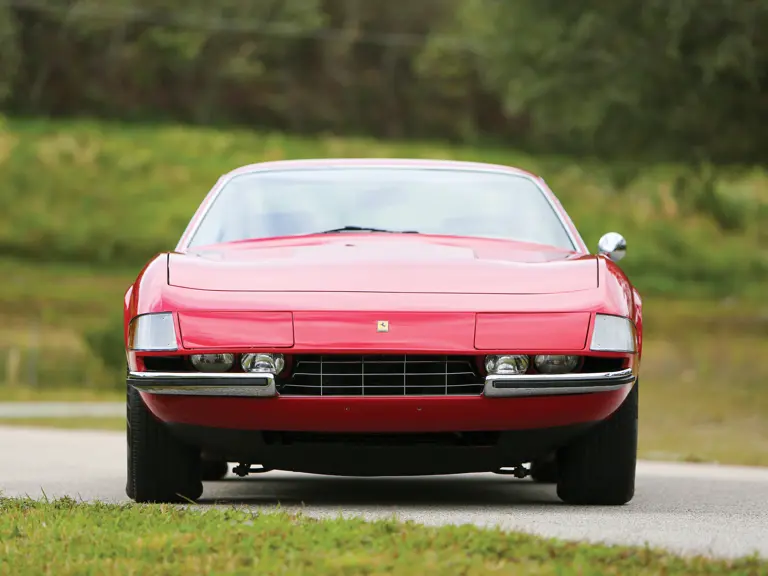


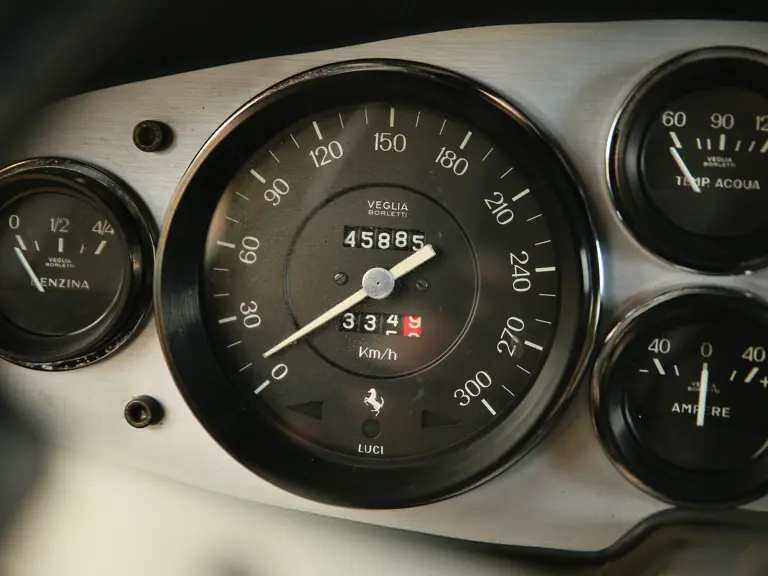


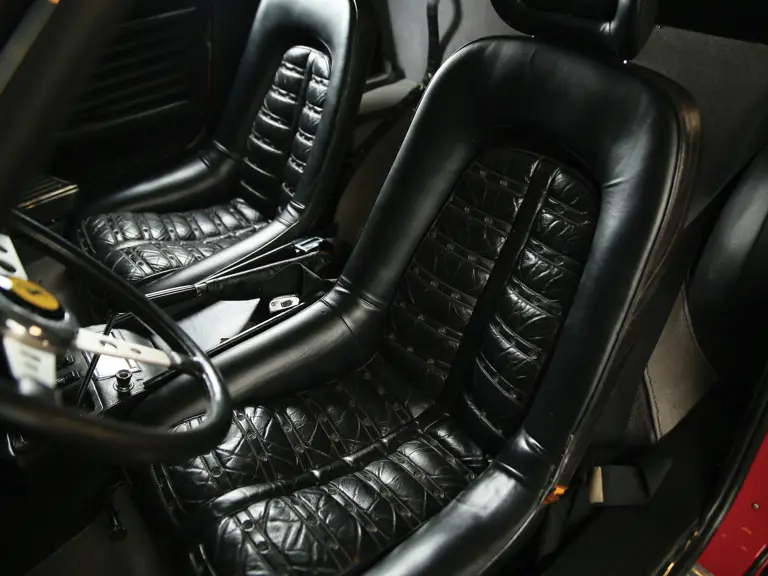
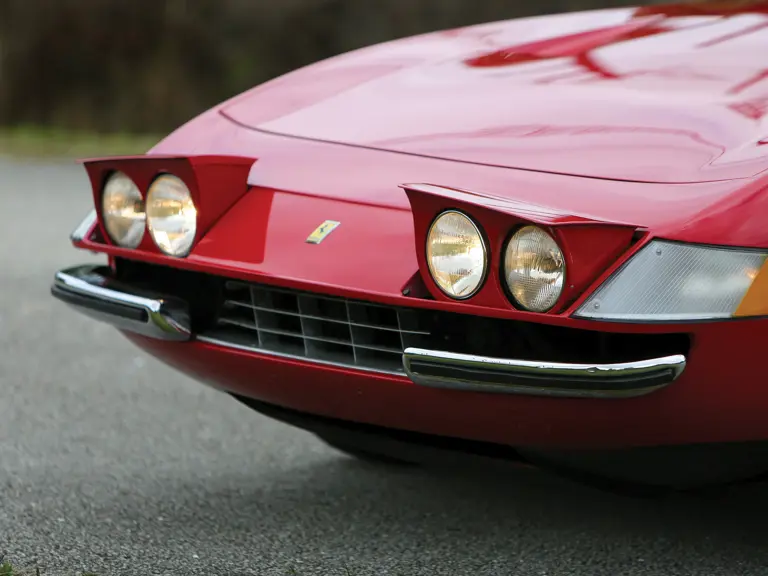

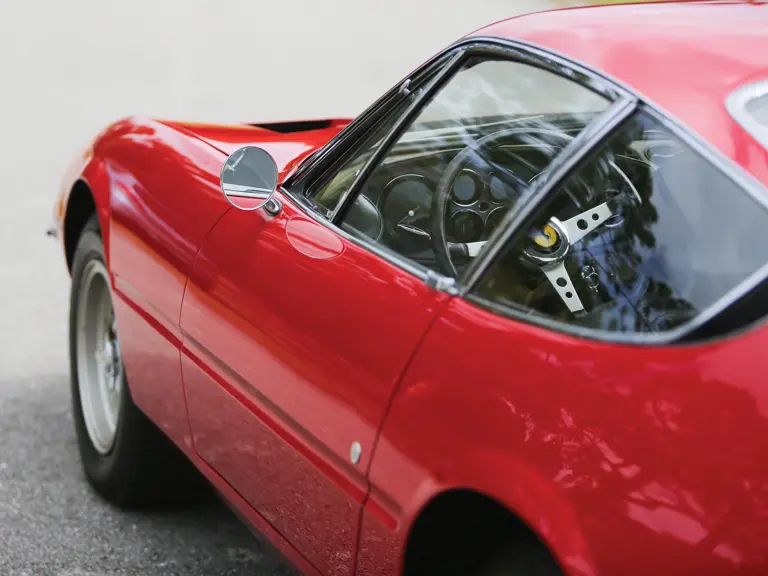
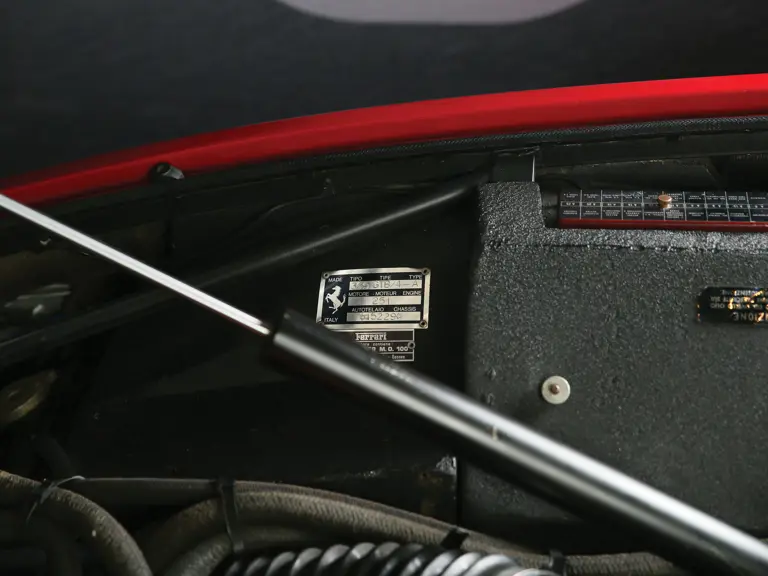
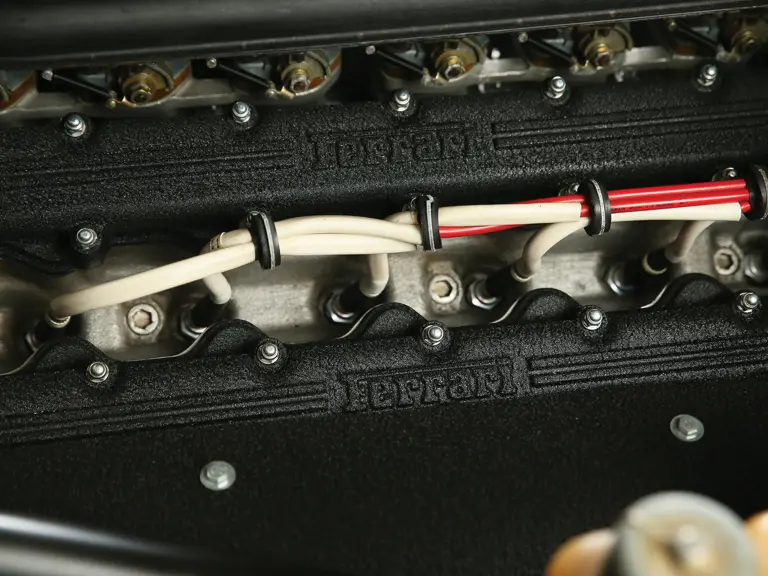
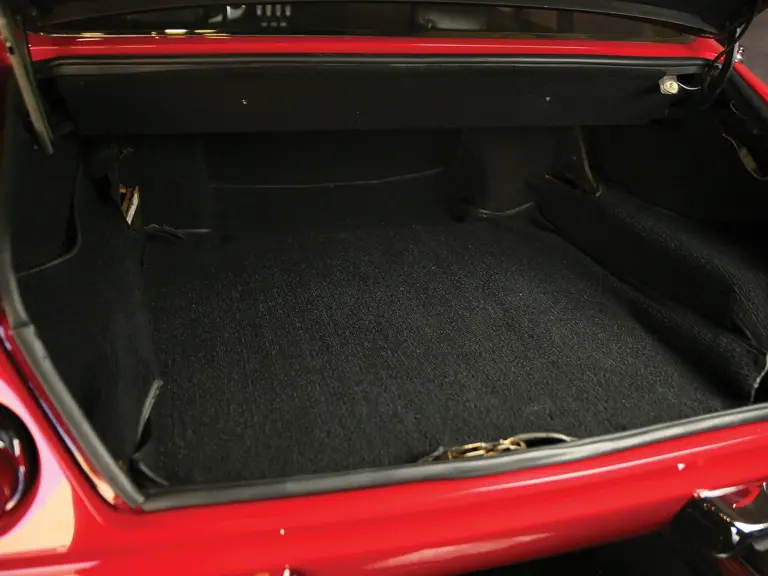
 | Amelia Island, Florida
| Amelia Island, Florida
